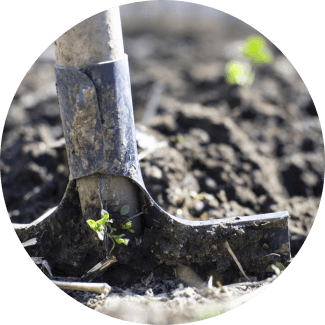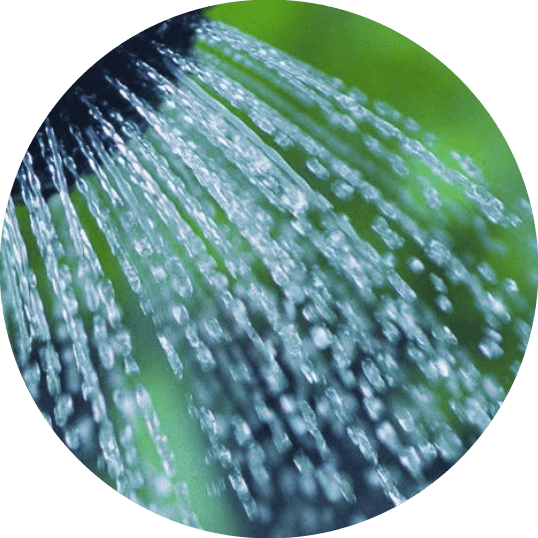Thriving, healthy turf can survive extended periods without rain
There is a serious water shortage in many parts of North America and improperly growing and maintaining a home lawn can be huge burden on the water supply. In many cases, lawns are being scapegoated as water-hogging sponges that do nothing but pollute the environment and waste valuable water resources. While this may hold some accuracy, it does not have to be that way. A properly managed lawn, made up of the appropriate grass species and balanced soil, can be functional and use little or no supplemental water.
enhanced through selective breeding resulting in new and improved cultivated varieties. Drought tolerant species include not only fescues, and Buffalograss but improved varieties of fine fescues and bluegrass. A balanced soil plays a large role in the ability for grass to withstand extremes, so again, have the soil tested and go from there.
Typically a lawn would require about one inch of water per week, applied in one or two deep waterings. Drought tolerant grasses require anywhere from 3/4″ – 1/4″ of water per week. These are optimum growing conditions though and a healthy, drought tolerant lawn, grown in ideal soil conditions, will undoubtedly be able to withstand extended periods without water. In extreme drought, where no supplemental water is available, many grasses “brown out” and go dormant in a last ditch effort to not die.
Dormant grass is not dead and it will come back when it rains.


Soil Management in your Lawn
Proper soil management is key for any lawn.
Water Management
The main reason lawns are the number one villain in a drought is due to the untold amounts of water used to keep it green.


Drought Tolerant Grasses
In extreme drought many grasses “brown out” and go dormant in a last ditch effort to not die. Dormant grass is not dead and it will come back when it rains.
Don’t Stress Your Lawn in A Drought
A lawn going through a drought is under stress.

